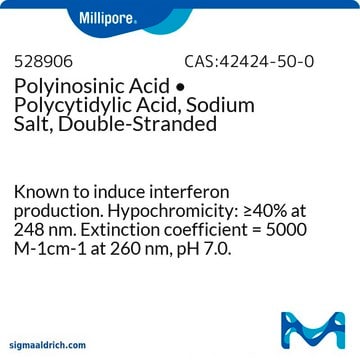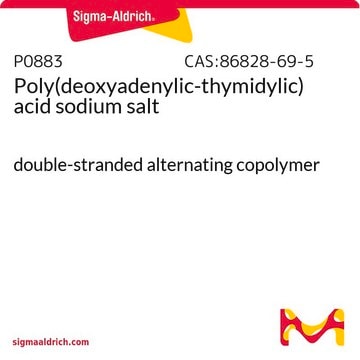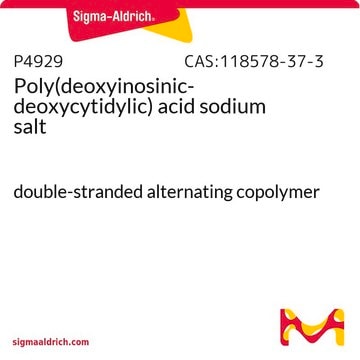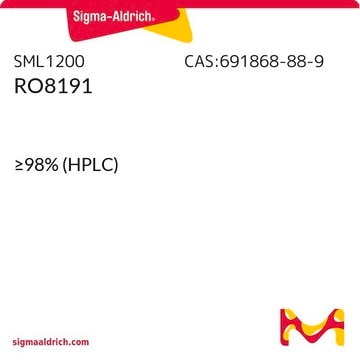P9582
Polyinosinic–polycytidylic acid potassium salt
with buffer salts, TLR ligand tested
Synonym(s):
Poly (I:C), Poly(I) • Poly(C)
About This Item
Recommended Products
Quality Level
Assay
≥99% (less than 1% free nucleotides, TLC)
form
lyophilized powder
composition
Poly(I) • Poly(C), 10% (balance buffer salts as sodium chloride and sodium phosphate)
storage condition
desiccated
storage temp.
−20°C
Looking for similar products? Visit Product Comparison Guide
Application
Biochem/physiol Actions
Packaging
Other Notes
Preparation Note
Storage Class Code
11 - Combustible Solids
WGK
WGK 3
Flash Point(F)
Not applicable
Flash Point(C)
Not applicable
Personal Protective Equipment
Certificates of Analysis (COA)
Search for Certificates of Analysis (COA) by entering the products Lot/Batch Number. Lot and Batch Numbers can be found on a product’s label following the words ‘Lot’ or ‘Batch’.
Already Own This Product?
Find documentation for the products that you have recently purchased in the Document Library.
Customers Also Viewed
Our team of scientists has experience in all areas of research including Life Science, Material Science, Chemical Synthesis, Chromatography, Analytical and many others.
Contact Technical Service













